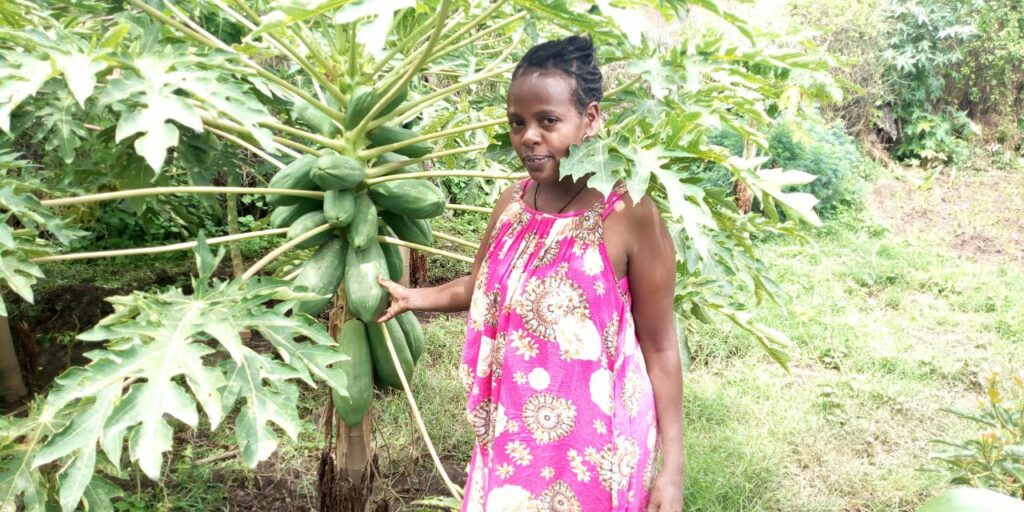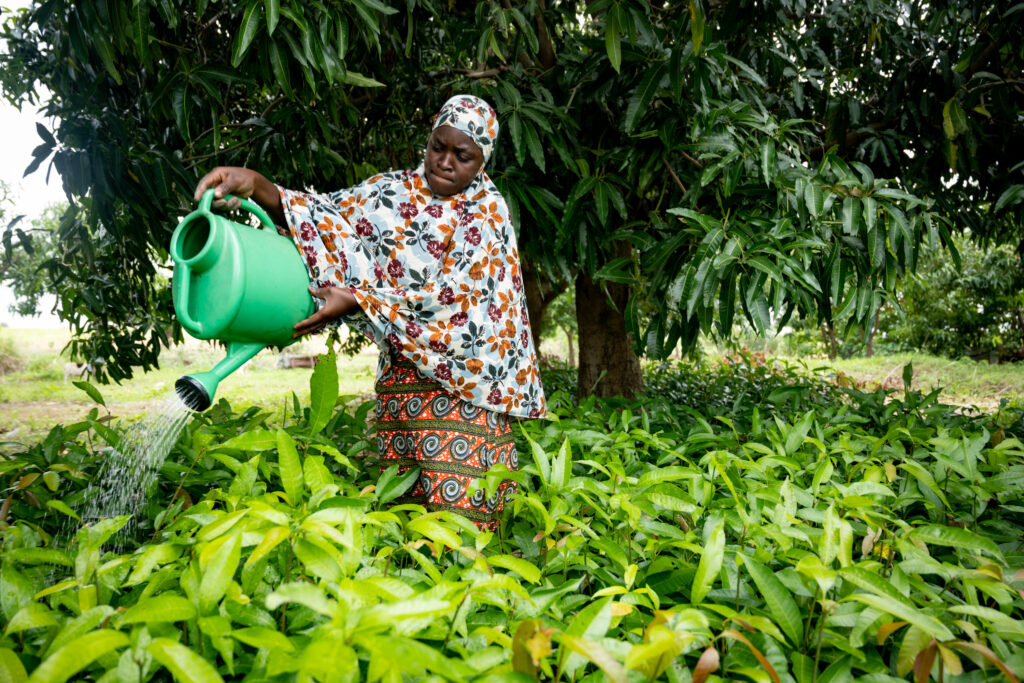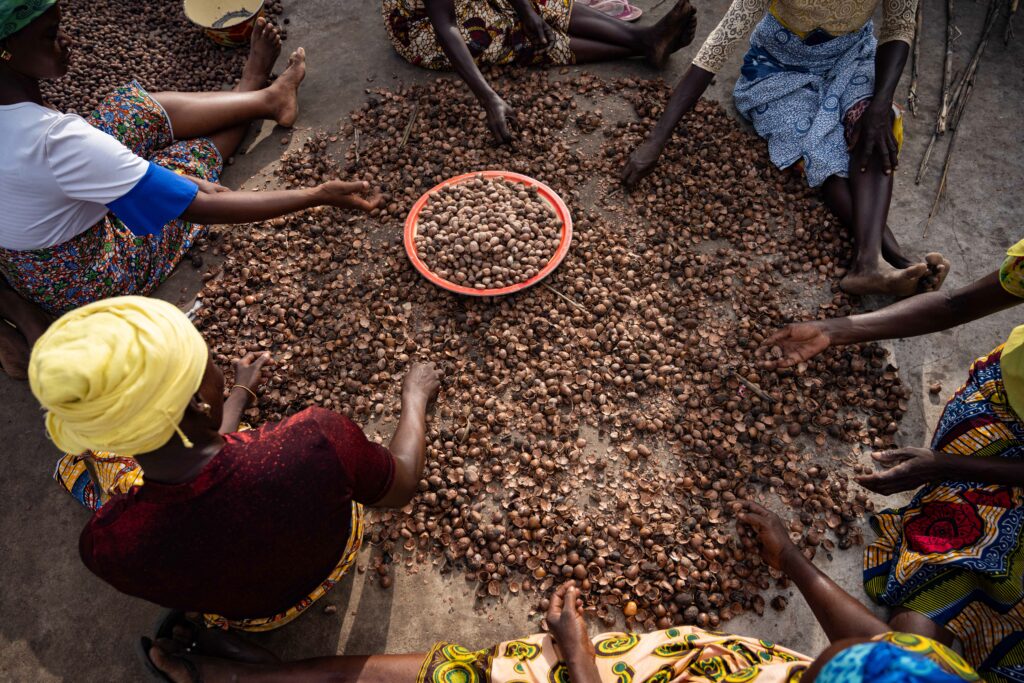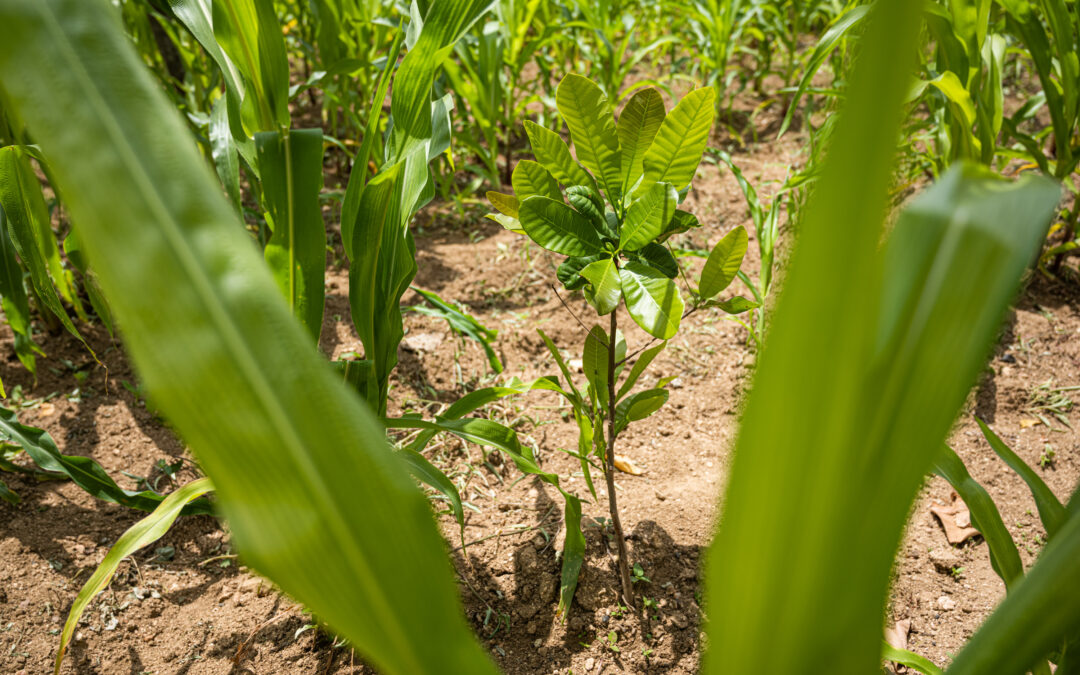By Grace Koech
The Regreening Africa project is promoting and building capacity for home gardening in several African countries to address food insecurity, land degradation, and climate change impacts – and it’s experiencing some early signs of success.
Across our planet, over a billion people currently depend on degraded lands for food. With many of these lands becoming drier through persistent droughts and erratic rains, and population pressure on the rise, the challenge of food security is becoming ever more pressing.
In this context, the EU-funded Regreening Africa project has identified home gardening as a way to diversify livelihoods, increase agricultural production, promote gender-responsive restoration initiatives, and boost household nutrition. It’s hoped that the approach will help to restore degraded lands, while securing food and nutrition security and enabling women and youth to contribute to restoration goals.
Home gardens are multilayered, highly biodiverse agroforestry systems, which comprise crops, trees, and shrubs at different levels of growth and development. They also serve as a major source of timber and non-timber products such as fruits, vegetables, and firewood; they supplement wood and non-wood products that would otherwise be harvested, and as such ease pressure on adjacent forests. As such, Regreening Africa is promoting and building capacity for home gardening in Ethiopia, Ghana, and Mali, and experiences so far display some early progress toward restoring and sustaining agricultural lands.
In 2019, in Ethiopia’s Alelu Gesela kebele in Sire district, 145 kilometers from Addis Ababa, project officers trained 88 men and 22 women farmers on establishing home gardens. This involved selecting suitable sites to set up the gardens and choosing appropriate trees and vegetables to plant there. After the training, each farmer received ten seedlings of grafted avocado, mango, papaya, and lemon.
Just two years after the training, the farmers were harvesting an annual average of 50 fruit from each papaya tree. The market for papaya is highly accessible – farmers can sell from home, or from the township of Sire, which is five kilometers away. Farmers are using the proceeds to meet domestic expenses, purchase educational materials and – in some cases – re-invest in restoration work, such as buying tree seedlings for establishing woodlots, planting shade trees, and boundary tree planting.
Mamitu Kumbi, one of the project participants, used the seedlings to plant a papaya and avocado orchard. When the project team visited her farm in 2021, she confessed that she had not anticipated much productivity from the papaya trees, but quickly found she was growing enough both for home consumption and sale at the market. She manages her resources carefully: “Since we have a water challenge, I recycle kitchen wastewater by treating it with ash and use it to water the fruit trees,” she said.

Mamitu, at her orchard farm in Sire district, Ethiopia. She has planted papaya and avocadoes around her homestead. Photo credit: Catholic Relief Services Ethiopia/Malefia Tadele.
A similar initiative in Mion District, Ghana is also reaping benefits from integrating vegetable and tree seedling production. The Nsoja Female Vegetable Farmers group, which participated in the project, has two tree nurseries located near the Dakah River. There, they produce tree seedlings – mainly cassia and teak species – which they sell to community members. Through this work, the 30 farmers in the group currently earn around GHC200-300 (USD33-50) per month. To increase their income, the group is calling for support with value-chain profiling and business plan development, in order to enhance their capacity to explore business opportunities from tree seedling production. During a joint reflection and learning meeting, Regreening Africa’s Project Manager for Ghana, Edward Anaba Akunyagra, highlighted the contribution that the women’s group has made to restoration goals, whilst enhancing their own livelihoods. “Approaches that have a direct impact on farmers’ lives act as incentives to adopt restoration initiatives that can be scaled,” he said.

A woman watering tree seedlings. Photo credit: Regreening Africa/Kelvin Trautman
In the Malian municipalities of San, Koutiala, Tominian, and Yorosso, the project launched a campaign called ‘One woman – One shea/parkia’. Through the campaign, 351 women and 155 men planted a total of 405 shea [Vitellaria paradoxa] and 1,285 parkia [Parkia Biglobosa] trees in the five intervention communities in 2020. The trees have been planted in home gardens to benefit from recycled wastewater, especially during the dry season, and to enjoy protection from grazing animals. The project aims to: strengthen shea and parkia value chains through increased availability of raw materials; boost environmental health through the provision of ecosystem services; and halt pressure on existing shea and parkia parklands.

Women sorting out shea nuts. Photo credit: Regreening Africa/Kelvin Trautman
As the above examples have illustrated, the home gardening arm of Regreening Africa is implementing diverse restoration practices depending on the degraded area, the needs of local communities, and the available resources. “The options implemented across the project countries were selected through participatory mapping and selection involving different stakeholders at all levels,” said Sammy Carsan, a scientist at the Center for International Forestry Research-World Agroforestry (CIFOR-ICRAF), and Regreening Africa’s Design, Techniques, and Implementation Lead. “These options are refined based on lessons learnt and responding to prevailing environmental and social conditions.”
This story was produced with the financial support of the European Union. Its contents are the sole responsibility of Regreening Africa and do not necessarily reflect the views of the European Union.

